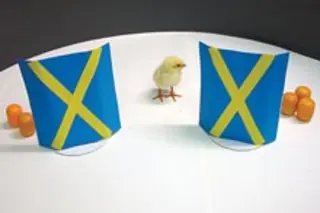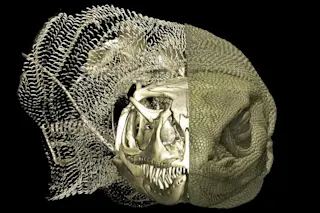Young chickens just a few days old can count and perform basic arithmetic, according to a fluffy new study. Researchers manipulated objects that the chicks had formed an attachment to, moving the objects behind little screens, and found that the observant young birds kept track of where the objects were. In effect, the chicks were solving simple math problems like "4 – 2 = 2." While some adult animals, including primates and dogs, have been found to have an understanding of basic math, researchers had not previously demonstrated numerical abilities in any young animals (except for humans). Karen Wynn,
who has reported evidence of numerical skills in human babies, points out that the chicks haven’t had a chance to learn or develop much. “This work, then, is a compelling existence proof that numerical understanding comprises a built-in system of unlearned knowledge,” Wynn says [Science News].
To conduct the experiment, lead ...














